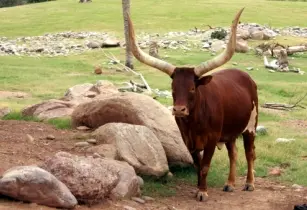FoodTank report reveals that many of Africas cattle breeds are under the threat of extiction
The non-for-profit FoodTank, have recently released a list of 35 species which are about to become extinct. In addition to this, according to the UN Food and Agricultural Organization (FAO), close to 17 per cent of the world’s livestock breeds face extinction. Many of these livestock breeds are indigenous, adapted to local conditions with long agricultural and pastoral traditions. Africa alone is home to more than 150 cataloged breeds of cattle.
The International Livestock Research Institute (ILRI) reports that up to 80 per cent of the agricultural GDP in developing countries comes from livestock; 600mn rural poor are dependent on livestock to feed themselves and their families. Poor farmers often raise indigenous breeds, managing herds both to maintain diversity and to support community livelihoods. This direct human involvement in cultivating agricultural biodiversity is “inherently linked to sustainable use,” according to the Convention on Biological Diversity.
“Genetic diversity is a prerequisite for adaptation in the face of future challenges,” said FAO Director-General José Graziano da Silva. A diverse population of livestock can spread risk across multiple levels. Not only do “local breeds have greater abilities to survive, produce, and maintain reproduction levels in harsh environments,” said Bertrand Dumont, researcher with the French National Institute for Agricultural Research, but they tend to be less cost-intensive to raise.
Irene Hoffmann, the head of FAO's Animal Genetic Resources Programme pointed out that in the face of challenges including climate change, disease, famine, drought and land degradation, diverse indigenous breeds of livestock could be of great importance for food security and to make food production more resilient. A more diverse set of genetic material could help farmers and breeders adapt and respond to the ever-changing world around them.
However, the global rise in meat consumption has driven a shift to industrial meat production. In the past 10 years, worldwide meat production has risen by 20 per cent. The FAO projects a 3.5 per cent global increase in poultry trade in 2016 alone. About 67 per cent of that poultry production comes from industrial animal operations or factory farms. And some 42 per cent of global pork production is from factory farms.
Farming and pastoral communities, as well as many farmers’ organisations across the globe, are making an effort to promote the conservation and cultivation of indigenous breeds of livestock. The FAO reports an overall uptick in national investment in gene banks and information systems for the preservation of genetic material from livestock.
Veterinarians Without Borders is currently working in Liberia, Uganda, and Ethiopia on programs that educate university students and smallholder farmers on animal husbandry techniques and human health. In sub-Saharan Africa, Southeast Asia, and the Pacific Islands, the Turing Foundation offers grants and funding to support sustainable livestock and agricultural practices. Through its focus on holistic systems, the Africa Centre for Holistic Management encourages the use of livestock in land restoration and conservation projects through on-site training and education.








